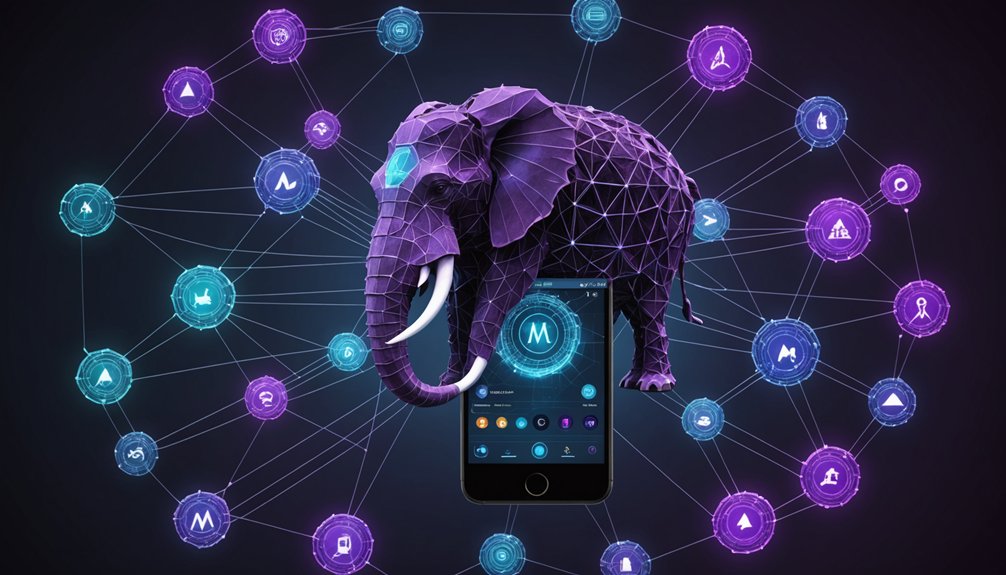Mastodon offers the most approachable on-ramp to decentralized social networking. It mimics Twitter’s familiar feel without the algorithmic manipulation or data harvesting. Over ten million users have figured it out. Yes, the federated structure takes some getting used to. No, it’s not perfect. But for social media refugees seeking control without diving into complex blockchain alternatives, Mastodon hits the sweet spot. The deeper ecosystem awaits those ready to explore further.

Why settle for corporate-owned social networks when there’s Mastodon? This open-source platform has been shaking up the social media landscape since 2016, offering a revitalizing alternative to the data-hungry giants we’ve all become too familiar with. No creepy ads following you around. No mysterious algorithms deciding what you see. Just pure, unadulterated social networking.
Mastodon operates differently than what most people are used to. It’s decentralized—meaning it’s not one big website but a federation of independently managed servers, all talking to each other through something called ActivityPub. Each server has its own rules, its own vibe. Don’t like one? Jump to another. Your followers come with you. Your posts don’t, though. Tough luck. Unlike traditional platforms that use customer intent data to shape user experiences, Mastodon puts control firmly in users’ hands.
The platform saw massive growth after Elon Musk bought Twitter in 2022. Turns out people aren’t fans of billionaire whims dictating their online experience. Who knew? Mastodon’s user base exploded to over ten million accounts by March 2023, showing just how hungry people were for alternatives. Many users migrated seeking more control over their own content and digital presence. The platform’s ability to monitor digital conversations across servers helps maintain community standards and track emerging trends.
What makes Mastodon beginner-friendly? For starters, it works a lot like Twitter—microblogging, followers, the whole deal. But with extras. Want to warn people about sensitive content? There’s a feature for that. Want to control who sees your posts? Done. The interface is intuitive enough for anyone who’s used social media before.
It’s part of something bigger called the Fediverse. Sounds fancy, right? It just means Mastodon plays well with other platforms using the same protocol. Even Meta’s Threads is jumping on this bandwagon. Post on one platform, interact on another. No multiple accounts needed.
Written in Ruby on Rails and JavaScript, Mastodon supports 93 languages. It’s available on basically every device you can think of. Phone? Check. Computer? Double check.
The real beauty is in the community aspect. Small, interconnected groups with their own rules and moderators. No corporate overlords. No data mining. Just people connecting with people. Isn’t that what social media was supposed to be about in the first place?
Frequently Asked Questions
How Does Mastodon Make Money if It’s Not Ad-Supported?
Mastodon doesn’t chase ad dollars. Simple as that.
The platform runs on crowdfunding through Patreon (about 9,500 patrons) and Open Collective (over $93,000 raised).
They’ve got sponsorship tiers via Stripe too. Their funding goal? $50,000 monthly to expand the team.
Individual server operators might charge for accounts or accept donations.
It’s a non-profit model focused on community, not monetization.
No algorithms, no sponsored content. Just people.
Can I Migrate My Followers From Twitter/X to Mastodon?
Migration from Twitter/X to Mastodon isn’t automatic. Users must manually map profiles by including Mastodon handles in their Twitter bios.
Tools like Debirdify help find Twitter followers with Mastodon accounts, allowing export to CSV files for importing. Not everyone can be migrated—only those who’ve already joined Mastodon.
The process is clunky but workable. It’s a one-by-one affair, not the mass follower transfer many users hope for.
What Happens if My Chosen Mastodon Server Shuts Down?
If your Mastodon server shuts down, your account and data vanish. Gone. Forever. That’s the harsh reality.
But there’s a silver lining—you can migrate beforehand. Transfer your account to another server, keeping your followers intact. The federated structure means you’re not trapped.
Just remember to download important stuff and set up shop elsewhere before the lights go out. Server shutdowns happen. Financial issues. Technical problems. Lack of interest. Life goes on in the Fediverse.
How Private Are My Direct Messages on Mastodon?
Mastodon’s direct messages aren’t private. At all. They’re stored in clear text on servers, visible to administrators. Not end-to-end encrypted.
Sending a message to someone on another server? Now it’s stored on multiple servers. Great.
Mastodon does warn users about this lack of privacy. Their “DMs” are really just posts with restricted visibility settings.
For truly private communications, users should look elsewhere. Seriously.
Can I Schedule Posts or Use Third-Party Apps With Mastodon?
Mastodon lacks native scheduling. Tough luck. Users need third-party apps like Statuz, OnlySocial, or Mastodon Scheduler to post on a timeline.
These tools offer perks beyond basic scheduling—media management, content warnings, and analytics tracking. Some even handle multiple Mastodon instances simultaneously.
The benefits? Time savings, consistent posting, and better engagement through strategic timing. Each app works with Mastodon’s decentralized structure, respecting server-specific rules.




